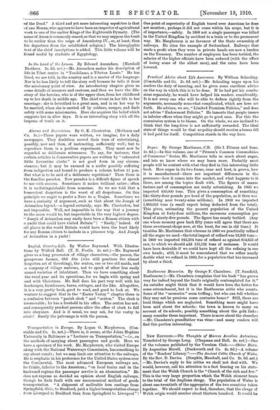Sugar. By George Martineau, C.B. (Sir I. Pitman and Sons.
ls. 6d.)—In this volume, one of "Pitman's Common Commodities of Commerce" Series, Mr. Martineau tells us much about sugar, and lets us know where we may learn more. Probably most people will be content with what they find in this interesting little book. How sugar in its two forms, cane and beet, is grown, how it is manufactured—there are important differences in the processes—how it comes into the market, and what happens to it there, are among the -topics dealt with. The figures of manu- facture and of consumption are really astonishing. In 1860 we imported 450,000 tons. This gives a consumption of something like thirty-four pounds per head of the population, as it then was (something near twenty-nine millions). In 1909 we imported 1,883,053 tons (a small export being deducted from the total). This gives, estimating the present population of the United Kingdom at forty-four millions, the enormous consumption per head of ninety-five pounds. The figure has nearly trebled. (Any one whose memory goes back fifty years will agree that there are three sweetmeat-shops now, at the least, for one in old time.) It troubles Mr. Martineau that whereas in 1860 we practically refined all the sugar we used—the total import of refined was 13,303 tons— in 1909 we imported 945,504 tons of refined as against 814,653 of raw, to which we should add 155,152 tons of molasses. It would have been desirable if we could have kept all the refining in our own hands ; still, it must be remembered that we refine nearly double what we refined in 1860, for a population that has increased by about a third.


































































 Previous page
Previous page